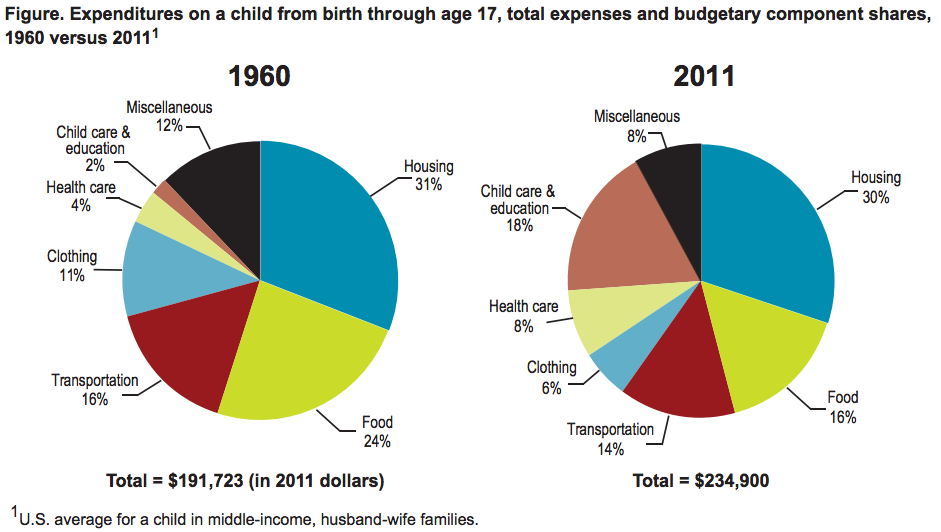When Class Became More Important to a Child's Education Than Race
In 1963, kids in the 10th percentile of income fell behind children in the upper echelon of wealth by about a year or so. Today, that gap is closer to four years.
Hannah was sleepy after a nap, but her face lit up as she was let loose with several other toddlers and their nannies. She grabbed some blocks and then headed to a table stocked with piles of a pink, play-dough-like sculpting material. For 45 minutes, the children wandered around wielding dolls and blocks, grabbing at each others' toys and taking turns on a miniature slide. When time was up, they sang along with the "Clean-Up Song" and helped put away the mess.
A drop-in class at the New York Kids Club costs about $47, according to an employee. Hannah's playgroup that day was free, but only because Klaitman, 40, and her husband, Jordan Small, 39, have enrolled their three children in package deals for classes in karate and preschool--which run about $650 per child for 17 once-a-week sessions. Klaitman estimates she's dropped thousands of dollars at the club over the years, not to mention what she spends on the private preschool her oldest son attends, additional classes in Spanish and music elsewhere, and the family's museum memberships.
When Martin Luther King Jr. gave his "I Have a Dream" speech a half-century ago, on Aug. 28, 1963, black children lagged behind their white peers in school by more than three years. For poor children, the picture was somewhat more encouraging: Those in the 10th percentile of income fell behind the children in the upper echelon of wealth by about a year or so. Poverty was a major obstacle, but not so large that it couldn't be scaled by the brightest and most ambitious.
Fifty years later, social class has become the main gateway--and barrier--to opportunity in America.
The country is far from fulfilling King's dream that race no longer limit children's opportunities, but how much income their parents earn is more and more influential. According to a 2011 research study by Stanford sociologist Sean Reardon, the test-score gap between the children of the poor (in the 10th percentile of income) and the children of the wealthy (in the 90th percentile) has expanded by as much as 40 percent and is now more than 50 percent larger than the black-white achievement gap--a reversal of the trend 50 years ago. Underprivileged children now languish at achievement levels that are close to four years behind their wealthy peers.
These days, middle-class children are also falling further behind their affluent peers. The test-score gap between middle-income (the 50th percentile of income) and poor children has remained stagnant; it's the gap between the top earners and the rest that is growing rapidly. And though more poor and middle-income children are completing college these days, they can't keep up with the growth in college graduates among the wealthiest families. A 2012 study by Reardon also found that "more and more seats in highly selective schools have been occupied by students from high-income families."
"Income has become a much stronger predictor of how well kids do in school," Reardon says. "Race is about as good a predictor as it was 30 years ago. It's more that income has gotten more important, not that race has gotten less important."
"I'm a middle-class New Yorker, and upper-class anywhere else," Klaitman says. "I know how astonishingly privileged we are, but at the same time we're dipping into savings for housing. I don't go out and buy shoes, but my kids have tons of classes."
Researchers say the expanding class gap in education is likely a byproduct of the country's widening income inequality. There's been an explosion in spending by well-to-do parents on their children: The amount has more than doubled in the last 30 years, according to work by Columbia University School of Social Work researchers Neeraj Kaushal and Jane Waldfogel and Katherine Magnuson of the University of Wisconsin.
Parents in the top quintile of income in the U.S. (households earning at least $102,000 in 2011, according to census data compiled by the Tax Policy Institute, a nonprofit research group) now spend more than double what parents in the second quintile (earning at least $62,000) spend on trips for their children-about $2,000 per year compared with $800, the Kaushal study found. They also spend significantly more on childcare, computers, books, and private-school tuition than their non-wealthy peers.
A 2013 study by sociologists Sabino Kornrich and Frank Furstenberg found that disparities in spending between the top and the bottom grew between the 1990s and 2000s, with parents in the bottom half of income distribution actually spending less on their children in the 2000s than previously--probably because of decreasing incomes.
"It's everyone trying to take care of their kids, but if you have a lot of money, you can do all of them, the Mandarin, the lacrosse, the SAT tutoring, the camps," says Richard Murnane, a Harvard University economist and editor of Whither Opportunity, a 2011 book that published the Reardon and Kaushal studies. "You can do a lot of extra things with extra money."
Money Matters
America's widening class gap shapes the hopes and prospects of families like the Lynches, who live just a few miles from the Klaitman-Smalls in Crown Heights, a mostly working-class neighborhood in Brooklyn where stately limestone townhouses and public housing projects stand side by side.
RELATED STORY


